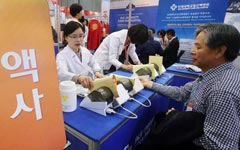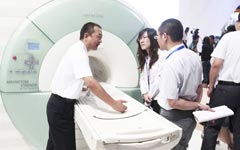A report published by Diabetes Research and Clinical Practice shows that China and India now have the largest diabetic populations in the world, comprising around 51 million and 43 million people respectively.
|
 |
|
 |
According to the WISH estimates, 44 percent of all counterfeit antibiotics in the world are distributed in Southeast Asia, compared with 30 percent in Sub-Saharan Africa and 9 percent in the West.
Two-thirds of hospitalized patients in China receive antibiotics, when the rate of usage in other countries is 30 percent.
In terms of mental illness ratio, about 17 percent of Chinese people are suffering from mild or severe problems, a figure much higher than the 10 percent world average ratio.
In the medical equipment market, Chinese, Indian and South Korean manufacturers are streets ahead of their competitors.
Although they make products of lower quality than the multinationals, they are more affordable and meet the basic needs of the average healthcare provider, according to a recent report by healthcare market research consultancy Clearstate.
Governments in Asia have actively joined the movements in the industry to build better healthcare systems.
Accountable care, a buzzword in the healthcare sector which refers to delivering integrated healthcare based on patients' real need to improve quality and cut costs, has also proved to be successful in some parts of Asia, the WISH meeting showcased.
Singapore's Agency for Integrated Care (AIC) is a good example. From 2008, the Singaporean government set the AIC system to deal with escalating healthcare demands of the aging population.
By categorizing different patient groups, setting community medical homes to cover relevant patients and transiting patients from hospitals into the appropriate long-term community-care program, it has reduced a patient's chance by more than 40 percent of being re-admitted to hospital within 30 days of discharge, saving more than $11 million a year on the cost of hospital re-admissions.
"A key issue is leadership — to shake up the system," says Jason Cheah, chief executive of the AIC.
|
 |
 |
